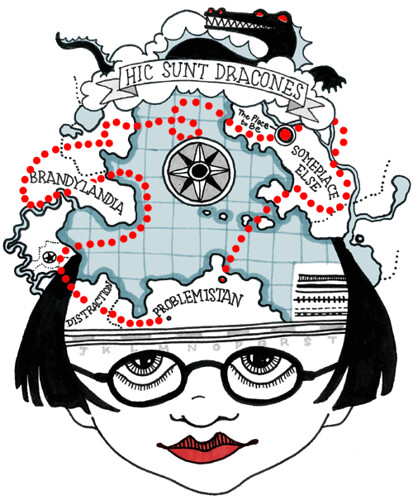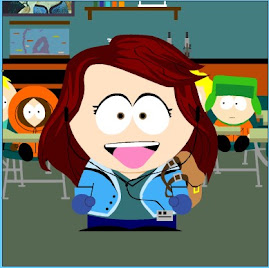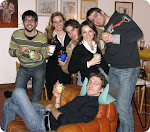 Did I tell you that I absolutely love decorating the Christmas tree? Well, this is the result of my efforts!! Do you like it?? :-)
Did I tell you that I absolutely love decorating the Christmas tree? Well, this is the result of my efforts!! Do you like it?? :-)
giovedì 27 dicembre 2007
My Christmas tree
 Did I tell you that I absolutely love decorating the Christmas tree? Well, this is the result of my efforts!! Do you like it?? :-)
Did I tell you that I absolutely love decorating the Christmas tree? Well, this is the result of my efforts!! Do you like it?? :-)
That's what Christmas is all about, Charlie Brown!
Video by devilishduck
I know that I've already talked about Charlie Brown and my passion for the Peanuts' band, but I just couldn't help adding this video too: its simplicity really moved me! :'-) Charlie Borwn is trying to organize a show to celebrate Christmas, but it seems that nobody knows what this holiday is all about: his friends are only interested in gifts, parties and food and cannot feel the real meaning of this holy day. A little, ailing tree will help them all to remember that Christmas is much more than that: it is an occasion to realize what life has given us and to let our loved ones feel our affection for them.
Mr Bean's Christmas party
Video by asmonaco6
Yesterday afternoon I was lying on my couch and watching TV - trying to recover from the Christmas nosh-up - when I came across one of the exhilarant episodes of "Mr Bean's saga"! If you like his speechless humour, have a look at this video! A suggestion: do not imitate the way he prepares the turkey...:-)
sabato 8 dicembre 2007
Get ready for Christmas!!!!
 image from Virgilio images
image from Virgilio imagesHave you ever watched "Nightmare before Christmas"? Well, this is the right moment!!! You won't regret it, it's amazing!!!
venerdì 7 dicembre 2007
Congratulations!!!!!!
 This is my friend Chiara, who took her degree in Economia internazionale last week! Because she is often ill (poor her!), we realized her fancy dress by sticking medicine boxes to an overall that Alberto's mom found in the hospital where she works.
This is my friend Chiara, who took her degree in Economia internazionale last week! Because she is often ill (poor her!), we realized her fancy dress by sticking medicine boxes to an overall that Alberto's mom found in the hospital where she works. But have a look at this second photo down here: she looked awesome at the party she organized to celebrate this moment!! Congratulations Chiara, I love you so much!

mercoledì 5 dicembre 2007
My PLE
Now that we’ve become little wizards in informatics, it’s time to enlarge our vocabulary as well: the unknown word of this week is…PLE!!! What on earth is a PLE? Do you eat it??? I read carefully e-tivity 9 and I cleared up the mystery: PLE is an acronym that stands for Personal Language Environment, that is "a combination of the formal and informal tools and processes we use to gather information, reflect on it and do something with it, which is essentially what we mean when we talk about learning"(Martin, 2007). Sarah explained that our own blogs are examples of PLEs, but she immediately added that a PLE is not something material and tangible: it’s a concept, an idea. It’s a “space” that each one develops according to his personal cognitive style, in which he finds everything he needs to develop and practise his language skills. Whether it is a blog, a website, a diary or a chat, it doesn’t matter: actually, it can be all four of them or none of them and it doesn’t necessarily have to be an object. Imagine it as the way you exploit the world to keep your language competences up-to-date, the way you use the environment as your private “language gym”. Have you ever thought about your learning process in these terms? Honestly, I tend to spend more time on doing things than on reflecting on how and why I do them; by the way, this activity could be an opportunity to sum up how we have organized the study of foreign languages so far, given that the end of our journey is not too far away. The years spent on school desks have almost gone: the training is over and we have to be aware of the level we have achieved to find our way in the world of job. A mind map can help us to draw a complete picture of our current situation and to understand how to strengthen our weak points in the next future.
Clicking here you can see the mind map of my PLE: making it was not so easy, I had to recall the learning strategies I’ve adopted so far and I’m pretty sure I forgot a lot of interesting hints. There are four main areas: “university”, “hobbies”, “personal experiences” and “certifications”.
I preferred to divide the first one into “traditional learning” and “technological tools”: it is a distinction that has become evident in relatively recent times, more or less since the last year of high school. Little by little, the means of communication and the new technologies have acquired a more and more important role in the teaching of languages, offering the learners the chance to keep on practising on their own by doing something they like (listening to CDs, watching videos, chatting, surfing the Web…). However, Web 2.0 & co. haven’t completely substituted books, grammar rules and exercises: they are still essential to lay the foundations of a solid knowledge that then can be put to the test on the Net.
Technology can be used in the spare time as well: for example, I’ve learnt lately that a feed aggregator like Bloglines can provide me the latest news from my favourite websites and online magazines. Everything can be useful to make you more and more confident in the use of languages: have you ever read the labels written in different languages on perfumes and shampoos??? Well, I always do! It’s quite odd, I know, but in this way I learnt that the English word for ”latte detergente” was cleansing milk :-) As my knowledge increased, I discovered that many things I was used to do in Italian could be done in a foreign language as well: by watching films and doing crosswords I can keep on learning without even realizing it.
Personal experiences are divided from hobbies: they are the occasions in which I could exploit my knowledge directly “on the field” (travels and little jobs).
The competences acquired in the ways mentioned above were evaluated: in the last year of high school I got the First Certificate of English, then I took private lessons of French and Arabic and I attended a summer course of Spanish; I had to take an exam at the end of each course to get a certification assessing my level of language knowledge. These experiences helped me to get used to the frightening moment of the test and to focus on the aspects of my preparation that needed to be improved. Over the “Laurea triennale”, I also developed my Language Portfolio, which is a sort of summary of the path I followed in the study of languages and contains some pieces of writing as an example of the level that I’ve achieved.
Then I added two more links: yesterday and tomorrow. Sarah said that our PLE is something that we create and change constantly, according to our age, the environment in which we live and our needs. For this reason, I decided to reflect upon the way I learnt languages in the past and the strategies I will use in the future. As you can see, when I was younger the learning process was based mainly on entertaining activities, a good technique to make children learn something new and unknown in a pleasant way. Next to the word “tomorrow” I put the icon of a bomb because I still can’t foreseen what the future has in store for me: I really hope I will have the chance to exploit what I’ve learnt so far and to speak the languages I’ve studied (and maybe some more!) everyday to keep my knowledge “fit”! By the way, I feel confident and I’m sure I will continue to improve my language skills whatever job I will happen to do. Why? The answer is the element that appears in all the areas of my mind map: CURIOSITY. I’ve always devoted myself to the study of languages simply for curiosity’s sake, it’s not a burden for me because I know that what I learn enables me to express what I think better and better. This is my passion and I know it will last forever.
Technology can be used in the spare time as well: for example, I’ve learnt lately that a feed aggregator like Bloglines can provide me the latest news from my favourite websites and online magazines. Everything can be useful to make you more and more confident in the use of languages: have you ever read the labels written in different languages on perfumes and shampoos??? Well, I always do! It’s quite odd, I know, but in this way I learnt that the English word for ”latte detergente” was cleansing milk :-) As my knowledge increased, I discovered that many things I was used to do in Italian could be done in a foreign language as well: by watching films and doing crosswords I can keep on learning without even realizing it.
Personal experiences are divided from hobbies: they are the occasions in which I could exploit my knowledge directly “on the field” (travels and little jobs).
The competences acquired in the ways mentioned above were evaluated: in the last year of high school I got the First Certificate of English, then I took private lessons of French and Arabic and I attended a summer course of Spanish; I had to take an exam at the end of each course to get a certification assessing my level of language knowledge. These experiences helped me to get used to the frightening moment of the test and to focus on the aspects of my preparation that needed to be improved. Over the “Laurea triennale”, I also developed my Language Portfolio, which is a sort of summary of the path I followed in the study of languages and contains some pieces of writing as an example of the level that I’ve achieved.
Then I added two more links: yesterday and tomorrow. Sarah said that our PLE is something that we create and change constantly, according to our age, the environment in which we live and our needs. For this reason, I decided to reflect upon the way I learnt languages in the past and the strategies I will use in the future. As you can see, when I was younger the learning process was based mainly on entertaining activities, a good technique to make children learn something new and unknown in a pleasant way. Next to the word “tomorrow” I put the icon of a bomb because I still can’t foreseen what the future has in store for me: I really hope I will have the chance to exploit what I’ve learnt so far and to speak the languages I’ve studied (and maybe some more!) everyday to keep my knowledge “fit”! By the way, I feel confident and I’m sure I will continue to improve my language skills whatever job I will happen to do. Why? The answer is the element that appears in all the areas of my mind map: CURIOSITY. I’ve always devoted myself to the study of languages simply for curiosity’s sake, it’s not a burden for me because I know that what I learn enables me to express what I think better and better. This is my passion and I know it will last forever.
Iscriviti a:
Post (Atom)





